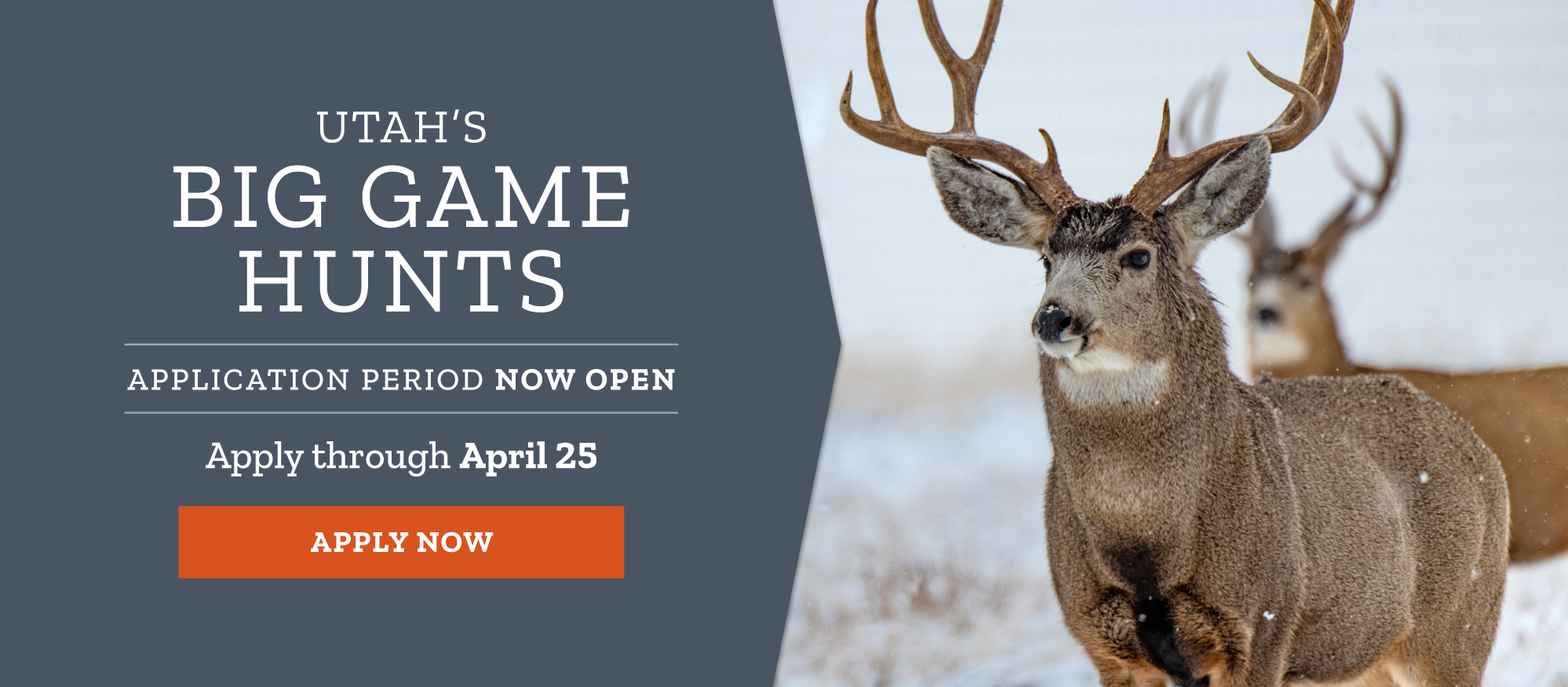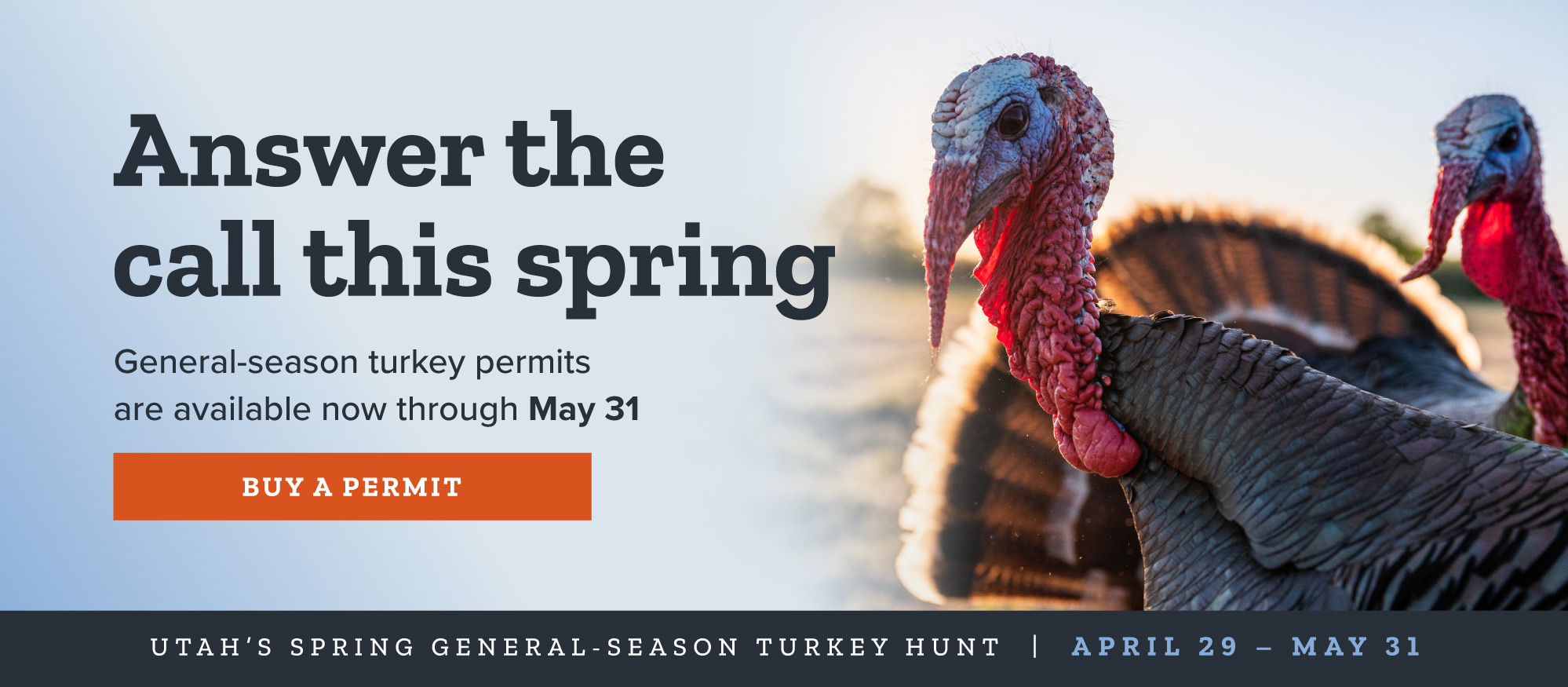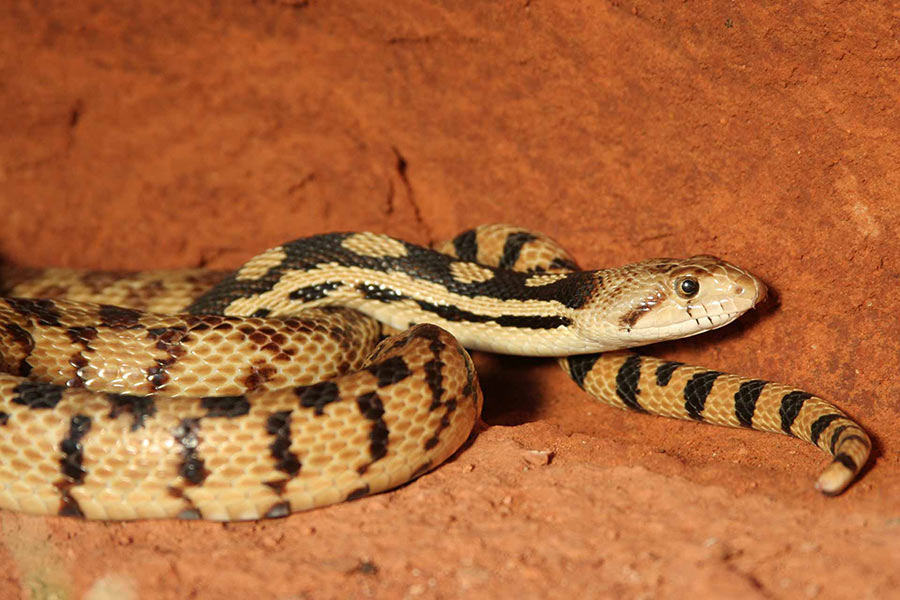- What hunters should know for the 2024 Utah spring turkey hunts
- Learn about bear safety at Hardware Wildlife Education Center exhibit
- Record 1,779 big game animals assessed, GPS collared during winter captures
- 6 easy ways to help wildlife on Earth Day (and the rest of the year, too!)
- Record $4.8 million raised for habitat restoration, wildlife projects through 2023 conservation permits
- DWR hosting first desert tortoise viewing event
- DWR confirms beavers killed by disease; urges public to report any dead beavers
- Come see great blue herons in the wild at upcoming DWR event
Utah reptiles and amphibians — other rules and requirements
Ethical collection, mandatory reporting, appeals, breeding animals, common questions and more.
After you've completed the online orientation course and obtained a herpetology collection permit, you can begin collecting reptiles and amphibians from the wild. Before you head out on your first collection trip, there are a few key things to keep in mind:
The following sections address those issues, along with the appeals process, registering as a breeder and answers to common questions.
Ethical collection practices
When you're out looking for animals, be sure to follow ethical collection methods:
- Watch where you step and do not destroy the animals' habitat
- Return rocks, logs and other cover objects to their original positions
- Respect private property boundaries
- Only handle the animal for the minimum amount of time necessary to photograph or identify it, especially if you don't plan to keep it
See which species you can collect and which species are prohibited.
Required documents
The types of species you want to collect — and how you plan to use them — will affect which wildlife documents you need to have. Some species don't require any kind of document, while others require a herpetology collection permit, a certificate of registration or special permission (a variance) from the Utah Wildlife Board:
- Prohibited species — variance from Wildlife Board
- Non-native venomous species — variance from Wildlife Board
- Native venomous species (particularly rattlesnakes) for personal use — certification of registration
- Species used for commercial, scientific or educational purposes — certificate of registration
- Controlled species — Either a herpetology collection permit or certificate of registration, depending on the species and circumstances
- Non-controlled species — No document necessary
See the species tables for more detailed information about which species fall into the categories listed above.
Mandatory reporting
You must complete the online report within 72 hours of taking a reptile or amphibian out of the wild. Your online report must include the following:
- The location where the reptile or amphibian was taken from. (Locality formats must be the latitude and longitude in decimal degrees or UTM coordinates.)
- The date that the reptile or amphibian was taken.
- The species that was taken. A photo can be included with the submission, but the standard common English name must be clearly indicated with the harvest reporting. (The standard common names that appear in this course will be the only options available for the online report.)
Keep in mind: You must retake the online orientation course at least once every three years if you intend to take reptiles or amphibians from the wild. Because this program launched in 2020, you must answer that no reptiles or amphibians were taken in 2019 or earlier.
The appeals process
The DWR may choose to deny a collection permit or certificate of registration to an applicant for any of the following reasons:
- The applicant has not completed the mandatory reporting.
- The applicant has violated Utah's wildlife laws or rules, especially those related to collecting reptiles and amphibians.
- The applicant misrepresented or failed to disclose information related to their application.
- The applicant's conduct, as it relates to collecting reptiles and amphibians, violates federal, state or local laws.
If the DWR denies an application, the applicant will receive written notification of the reasons for the denial. At that point, the applicant can request that the DWR Director reconsider the decision. That appeal must be made within 30 days of the original denial.
If the DWR Director denies the appeal, the applicant may then submit an appeal to the Utah Wildlife Board.
Registering as a breeder of reptiles or amphibians
If you successfully breed wild-caught reptiles or amphibians in Utah, you must report each breeding event to the DWR. The first time you report such an event will automatically register you with the DWR as a breeder of reptiles or amphibians.
Common questions and answers
Q: What if I'm not sure how to identify a species?
A: You should consider using the iNaturalist application. When you submit a photo of an animal via iNaturalist, there are experts who can help you quickly identify the species you've found. This is also a way for you to collect valuable wildlife data and observations that can be used by DWR biologists to learn more about Utah’s reptiles and amphibians.
Q: I've owned a venomous, non-native snake for years. Do these new regulations apply to me?
A: Current pets are grandfathered in.
Q: How can I protect myself from rattlesnakes while in the field?
A: If you encounter a rattlesnake in the wild, following these basic precautions will greatly improve your safety and the safety of others around you:
- Remain calm and do not panic. Stay at least 6 feet from the snake. Make sure to give it plenty of space.
- Do not try to kill the snake. Doing so is illegal and greatly increases the chance the snake will bite you.
- Do not throw anything at the snake (like rocks or sticks). Rattlesnakes may respond to this by moving toward the person doing the throwing, rather than away from them.
- If there are other people nearby, alert them to the snake's location. Advise them to use caution and to respect the snake. Keep children and pets away from the area.
- If you are hiking with a dog, keep your dog on a leash. Allowing your dog to roam increases the chance it will find a snake and get bitten.
- If you hear a rattle, try not to jump or panic. Try to locate where the sound is coming from before you move, so you don't step closer to the snake or on top of it.
- If you see a rattlesnake or Gila monster while road cruising, do not try to move them off of the road. Your own safety is more important than the safety of the snake or Gila monster.

















